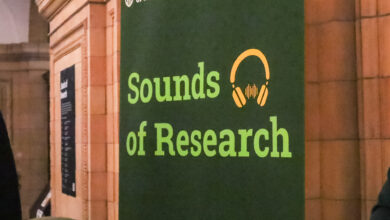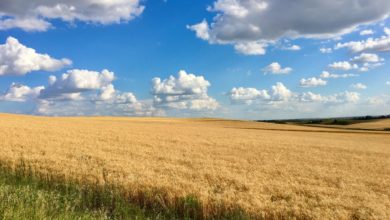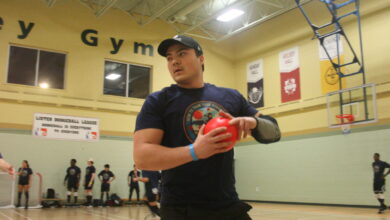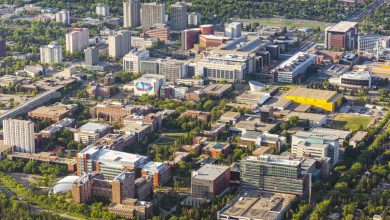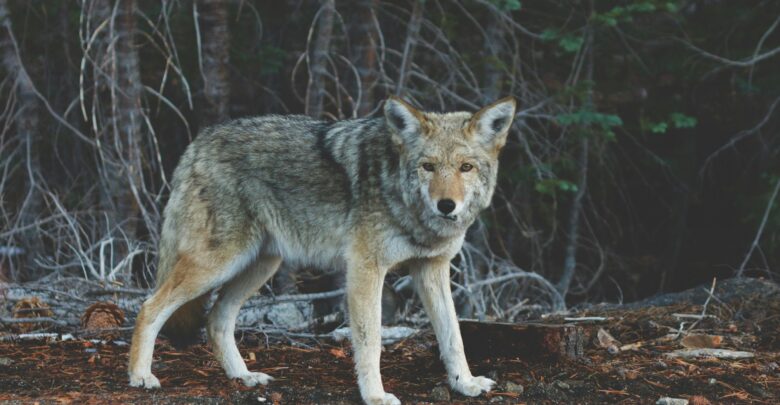 Josh Felise
Josh FeliseAside from humans, cities are home to animals such as coyotes, skunks, raccoons, and other wildlife. Within Edmonton, encounters with wildlife are not uncommon, especially because of the vast river valley.
Sitting at the intersection between animal ecology and wildlife management, Colleen Cassady St. Clair’s research focuses on wildlife behaviour within metropolitan areas. St. Clair is a professor in the department of biological sciences at the University of Alberta.
In her research, she often works closely with members of broader communities to raise awareness about urban wildlife. For her scholarly work and community engagement, St. Clair was awarded the Community Scholar Award.
Fueled by her early experiences volunteering with the John Janzen Nature Centre and working with the City of Edmonton, St. Clair’s journey in urban ecology began during her undergraduate studies in biology at the U of A. Since finding her niche in urban ecology, her work has evolved to include tackling human-wildlife conflict in urban areas.
Coyote sightings in Edmonton and many other cities in North America are increasing, St. Clair says
One of St. Clair’s major projects is the Edmonton Urban Coyote Project, in collaboration with several organizations including the City of Edmonton. There was a “sense of conflict people had with coyotes. They were nervous about seeing them in places they hadn’t seen before, like residential neighbourhoods,” St. Clair said.
Seeing a rise of coyote-human wildlife conflict, St. Clair realized there was a need to better understand the interaction between the two.
The research project aimed to study and develop solutions to reduce human-coyote conflict in urban areas.
“If we understood [human-coyote conflict] better, we could make recommendations,” St. Clair said. “That would help people to avoid that conflict and live a model of coexistence with coyotes.”
The integration of citizen science has been a key contributor to the project over the past decade. Since the project’s establishment in 2009, local residents have contributed over 10,000 reports of urban coyote sightings.
In high coyote traffic neighbourhoods, the U of A St. Clair Lab has also recruited citizen volunteers to assist in developing recommendations to reduce coyote-human interactions. Volunteers were trained in using aversive conditioning methods to discourage coyotes from being near humans.
Compared to their rural counterparts, urban coyotes are significantly more reliant on humans for food, St. Clair said.
Eventually, urban coyotes have come to associate people with resources. Human foods are often unhealthy for coyotes. According to St. Clair, this results in coyotes eating and becoming reliant on unhealthy food. Coyotes often become engaged in conflict with humans because of this.
“That’s a big problem. Not necessarily for the person who is doing the feeding but for their neighbours and children in the area because of how aggressive that makes coyotes,” St. Clair said.
“We are trying to increase awareness so that people are protected,” St. Clair says
Most of the time, coyotes are “not doing anything that is going to harm people in any way,” St. Clair said. According to St. Clair, areas like the river valley are great habitat locations for wildlife like coyotes. Having wildlife in the city is a “tremendous thing.”
“They provide all kinds of ecological or ecosystem services that are beneficial to maintaining biodiversity in the city and maintaining the health of people.”
However, a reasonable separation needs to be maintained to ensure that urban coyote populations remain healthy, St. Clair said.
“The number one thing is to just never feed coyotes, never let them become dependent on human sources of food.”
Preventing coyotes from consuming things like compost reduces the attractant, keeping coyotes away and healthy, she added.
Additionally, if a coyote is spotted, St. Clair said to act loud and aggressive to scare them away. Aggressive behaviour will teach coyotes to maintain a distance from high human-density areas. St. Clair recommends clapping your hands, shouting, or even throwing things. This way, “coyotes would be more likely to be sensitized to humans, rather than to habituate to them.”
“If we want to move that to coexistence, we need to be able to share space at the scale of things like a city, but at smaller spatial scales we need to segregate in time and space.”

